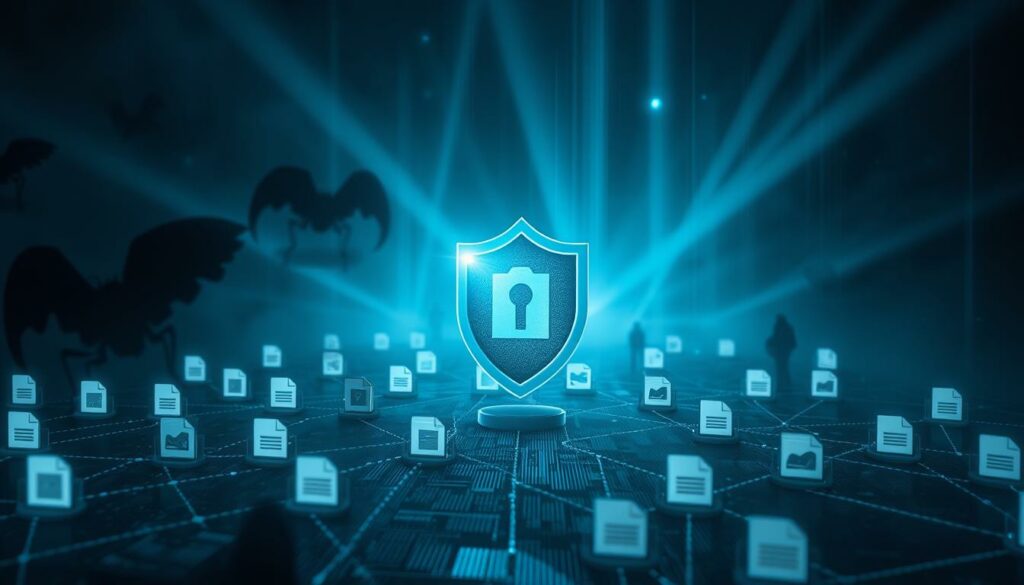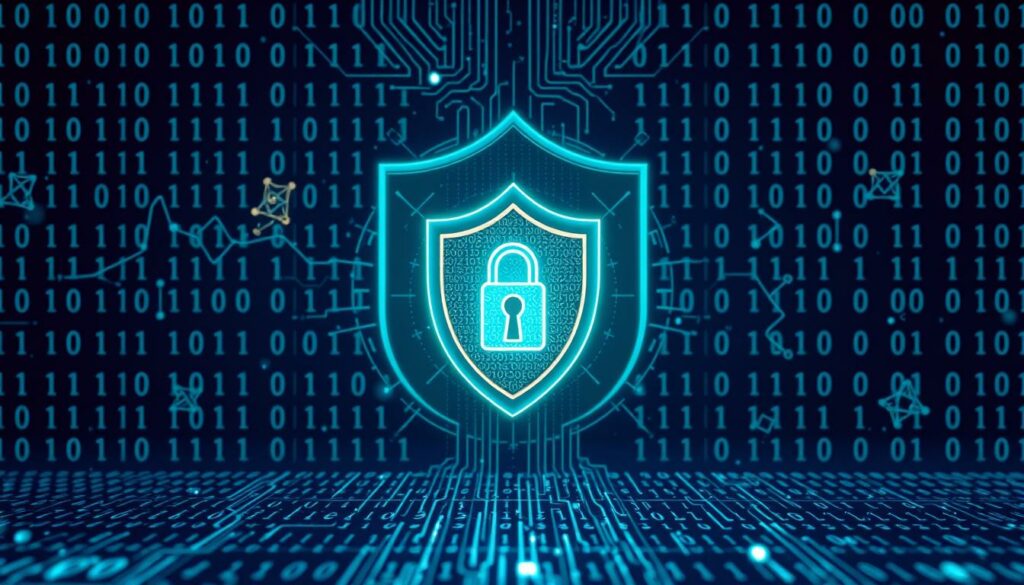Data Security Best Practices for File Sharing
In an age where cyberattacks and data breaches make headlines daily, protecting your information has never been more critical. Whether it’s personal files or sensitive business data, one slip-up could lead to disastrous consequences.
But, don’t worry—keeping your data safe doesn’t have to be overwhelming. By following proven data security best practices, you can outsmart cybercriminals, safeguard your information, and maintain peace of mind.
Ready to take control of your digital safety? Let’s dive in!
Understanding the Importance of Data Security
Data security is essential as remote work and cloud-based services grow, and protecting sensitive information has become increasingly challenging. Companies must prioritize measures such as data encryption, access controls, and incident response planning to safeguard their assets effectively.
The financial impact of data breaches is significant, with costs averaging over $4 million per incident. This highlights the importance of robust security measures to mitigate risks of unauthorized access and breaches. Implementing strong encryption and access controls can substantially reduce vulnerabilities.
Regulatory compliance further emphasizes the need for data security. Laws like GDPR and CCPA impose strict data protection standards, with non-compliance leading to hefty fines and legal repercussions. To meet these requirements, companies must adopt comprehensive security strategies encompassing encryption, access controls, and incident response protocols.
Beyond legal obligations, strong data security practices provide competitive advantages. They foster customer trust, attract privacy-conscious clients, and drive innovation. By prioritizing data protection, organizations can enhance their reputation and thrive in industries where data security is critical.

Common Data Security Threats in File Sharing
File sharing introduces several security risks that can compromise sensitive data. Here are some of the most common security risks associated with file sharing.
- Malware and Ransomware: Malicious software often hides in shared files, ready to infect systems upon download.
- Phishing Scams: Cybercriminals use deceptive tactics to trick users into disclosing sensitive data, such as login credentials or financial information.
- Accidental Data Leaks: Even trusted employees can unintentionally expose confidential information, making secure coding practices essential for prevention.
- Distributed Denial-of-Service (DDoS) and Man-in-the-Middle Attacks: DDoS attacks disrupt operations, while man-in-the-middle intrusions intercept file transfers. Both are significant threats, particularly when file transfers bypass firewalls, creating exploitable vulnerabilities.
In 2024, large-scale data breaches underscored the widespread risk. The average breach in the U.S. cost $8 million and affected over 25,000 user accounts per incident.
Vulnerability management is key to staying safe. Using multiple antivirus engines can catch up to 99% of known threats. The Open Web Application Security Project (OWASP) Top 10 list highlights common risks like broken access control and injection attacks. Organizations must also comply with data protection laws like GDPR and HIPAA or face hefty fines and damaged reputations.
To combat these threats, companies are turning to Proactive Data Loss Prevention tools. These solutions scan files for sensitive info, helping meet compliance standards. With rising social engineering, ransomware, and advanced persistent threats, staying vigilant is more important than ever.
Best Practices for Secure File Sharing
In a world where data breaches and cyber threats are constant worries, sharing files securely has never been more important. Whether it’s sensitive business documents or personal information, taking the right precautions can make all the difference. Below are some practical tips to keep your file sharing safe and worry-free.
1. Choose the Right File Sharing Solutions
Selecting the right file-sharing solution is critical for business security. Cloud-based services offer quick setup, flexibility, and features like access control, expiring file access, and compliance tools. To minimize security risks, prioritize business-grade systems over consumer-grade ones.
Strong encryption is essential. Options like Citrix ShareFile, Egnyte, and SugarSync provide 256-bit AES encryption and additional measures such as firewall protection and remote wiping capabilities.
Evaluate the provider’s file-sharing security best practices to ensure they align with your business needs. As part of third-party risk management, consider factors like data storage location, backup policies, and incident response procedures.
Finally, choose a user-friendly solution that balances robust security with ease of use. This will encourage adoption and prevent employees from turning to less secure personal cloud storage options.

2. Employee Training and Awareness
Employee training is essential for safeguarding company data. Regular sessions on data security help staff understand risks and adopt proper file-sharing practices. This reduces the likelihood of costly breaches and protects the company’s reputation.
Effective training goes beyond annual presentations. Monthly bite-sized lessons, supported by engaging video content and interactive modules, are more effective than traditional slideshows. Platforms like usecure provide extensive course libraries on key data protection topics.
Tailored training programs based on employees’ specific weaknesses yield better results. Baseline assessments measure progress and inform future lessons while linking assessments to immediate training reinforces learning. Gamification and rewards further boost engagement, making security education more enjoyable.
By cultivating a culture of data security awareness, companies empower employees to act as the first line of defense against cyber threats, ensuring compliance and protecting sensitive information for the long term.

3. Implementing Strong Password Policies
Small to medium businesses are prime targets for hackers, and weak passwords often serve as easy entry points. Experts recommend using passwords that are at least 16 characters long, combining uppercase and lowercase letters, numbers, and symbols. Alternatively, a passphrase consisting of 4-7 random words is also a secure option.
Unique passwords for each account are essential to prevent cascading breaches. Enterprise-level password managers like LastPass or Dashlane can generate and securely store complex passwords, removing the burden of remembering multiple credentials.
Multi-factor authentication (MFA) adds critical protection by requiring two or more verification methods, such as a password, a phone, or biometric data. MFA significantly reduces the risk of unauthorized access, even when someone compromises a password.
Regular password updates and monitoring account activity further strengthen security. Businesses should also educate employees, customers, and vendors on best practices, fostering a culture of security awareness. Combined with robust file-sharing protocols, these measures help build a solid defense against cyber threats.
4. Monitor and Audit File Shares
Keep a close eye on file server activity to spot unusual patterns that might signal security risks. Many file-sharing platforms offer built-in audit logs, making it easier to track user actions and identify potential threats.
Implementing advanced e-discovery tools enhances your ability to search file shares for legal and business purposes. These tools can help you pinpoint files that users haven’t accessed in months, allowing for efficient archiving or deletion.
To streamline security incident response, assign permissions to groups rather than individual users. This approach simplifies management and improves accuracy. Create permission sets based on departments or roles, always applying the most restrictive permissions necessary for job functions. Organizing resources with similar security needs in the same folder can further streamline permission management.
For enhanced security, remove ‘Everyone’ permissions from all resources except global exchange folders. Limit Full Control permission to the Administrators group and restrict its membership. Consider creating a “global deny” group for quick access revocation when employees leave. Regularly review file server contents to ensure compliance with your organization’s policies, focusing on large files, duplicates, and empty folders.
5. Back-Up Shared Data
Regular data backups protect against security breaches, accidental deletions, and system failures. The 3-2-1 rule serves as a widely endorsed data backup strategy. It suggests keeping three complete copies of data, with two on different media types and one stored off-site.
Cloud storage has become a popular choice for disaster recovery. It offers cost-effective solutions for smaller organizations and provides archiving options for larger ones. Some backup vendors now offer cloud storage for archival and disaster recovery functions, making it easier to test recovery plans.
When choosing a backup solution, consider both local and cloud options. Hybrid solutions like Egnyte provide both with automatic syncing. Remember to encrypt your backups and implement access controls to maintain security. Regularly test your backup systems to verify that you can successfully restore data.
Due to ransomware threats, the frequency of backups has increased. Organizations now need to protect all data sets multiple times per day. Analysts expect recovery times to take minutes rather than hours, putting pressure on IT teams to implement effective data backup strategies.
Legal and Regulatory Considerations
Data protection laws like GDPR, CCPA, and HIPAA impose strict guidelines for handling sensitive information. Non-compliance with these laws can lead to substantial fines and reputational damage. GDPR penalties can reach up to 4% of annual revenue or €20 million, while HIPAA violations may cost $50,000 per incident.
To minimize risks, businesses must adopt robust data privacy practices, including data minimization, transparency, and obtaining proper consent. Regular audits ensure ongoing compliance with evolving regulations, and employee training helps maintain awareness of legal requirements.
Regulatory compliance is not just about avoiding fines; it’s also about preserving customer trust and competitive advantage. By prioritizing data security and privacy, companies protect themselves and their clients while enhancing their reputation in the digital age.
Future Trends in Data Security for File Sharing
Analysts project the global file transfer market will reach $40 billion by 2024, growing at an annual rate of 9.2%. This rapid expansion brings both challenges and opportunities for data security.
AI is transforming cybersecurity, with machine learning algorithms enabling faster and more accurate detection of threats. As cyberattacks grow increasingly sophisticated, AI-driven defenses will become essential.
Zero trust security also reshapes file sharing by assuming that no user or system is inherently trustworthy. Continuous verification and limited access to sensitive data reduce breach risks and enhance overall security.
Cloud-based solutions continue to dominate due to their scalability and advanced security features. With the widespread adoption of multi-factor authentication and Single Sign-On, these platforms are setting new standards for protecting sensitive information.
Regulatory shifts, such as the Trans-Atlantic Data Privacy Framework, are pushing software vendors to prioritize robust data protection. This emphasis on compliance benefits both businesses and consumers, driving the industry toward stronger security measures.
Building a Secure File Sharing Environment With DivShare
implementing robust data security best practices is essential for safeguarding sensitive information in today’s digital age. From strong password management and regular software updates to encrypting data and educating employees on cybersecurity, proactive measures can significantly reduce the risk of breaches.
By staying vigilant and adopting a comprehensive security framework, individuals and organizations can ensure the integrity, confidentiality, and availability of their data. This fosters trust and resilience in an increasingly interconnected world.
Ready to implement these data security best practices? With DivShare, you can securely store and share your media while protecting it from unauthorized access. Sign up today to ensure your files remain safe and accessible when you need them.